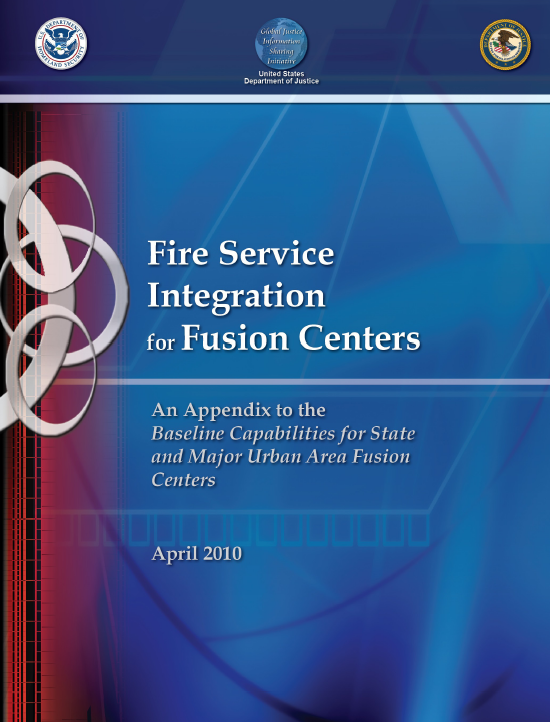 Global Justice Information Sharing Initiative
Global Justice Information Sharing Initiative
- 18 pages
- April 2010
This document identifies recommended actions and guidance for state and major urban area fusion centers (fusion centers) to effectively integrate the fire service into the fusion process.
Within the context of this document, the fire service is defined as including fire and emergency operations, emergency medical service operations, rescue operations, hazardous materials operations, fire prevention/protection, fire investigation, incident management, and responder safety.
Recognizing the value and importance of incorporating the fire service into the fusion process requires an understanding of the evolution of the terms “information” and “intelligence” as they pertain to the current homeland security environment. Though once thought of as relating only to prevention, protection, and investigation missions, information and intelligence are now also recognized as important elements in support of the preparedness for and execution of response and recovery missions. These missions are performed by departments across the emergency services sector, including law enforcement, fire service, and emergency management, as well as public health departments, critical infrastructure owners/operators, nongovernmental organizations, and the private sector. This document is written on the premise that information and intelligence serve all homeland security partners across all mission areas.
The document is an appendix to the U.S. Department of Justice’s (DOJ) Global Justice Information Sharing Initiative’s (Global) Baseline Capabilities for State and Major Urban Area Fusion Centers (Baseline Capabilities document), which defines the capabilities and guidance necessary for a fusion center to be considered capable of performing basic functions (e.g., the gathering, processing, analysis, and dissemination of terrorism, homeland security, and law enforcement information).
The document does not identify additional capabilities for fusion centers. Rather, the document identifies how fusion centers can effectively integrate the fire service into their existing analysis and information/intelligence sharing processes. In addition, this document provides federal, state, local, tribal, and territorial fire service organizations with an overview of the mutual operational value in working with their local fusion center, as well as different options for establishing relationships with the fusion center.
